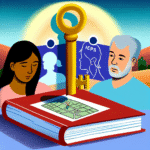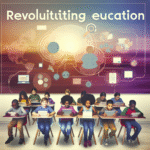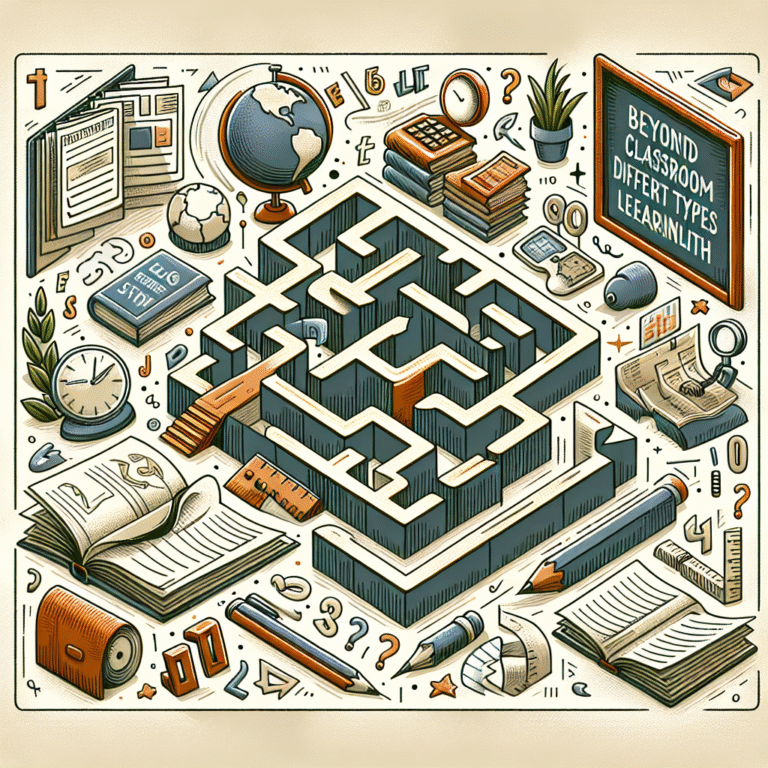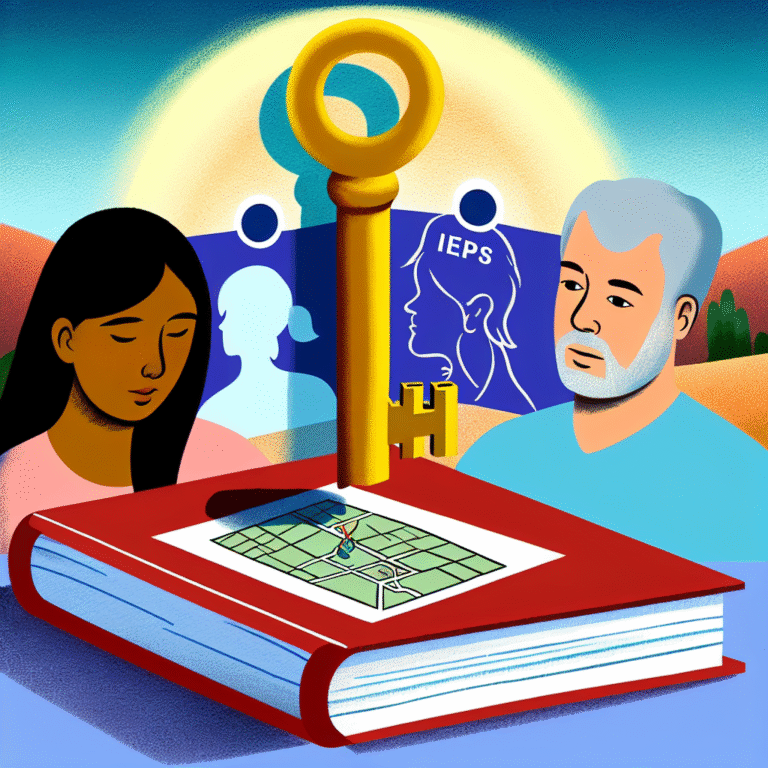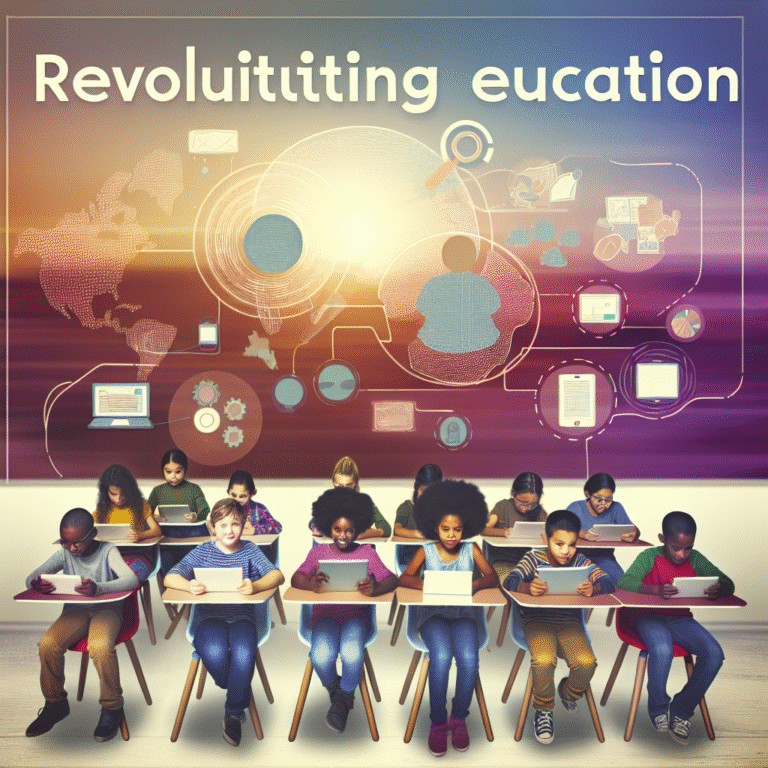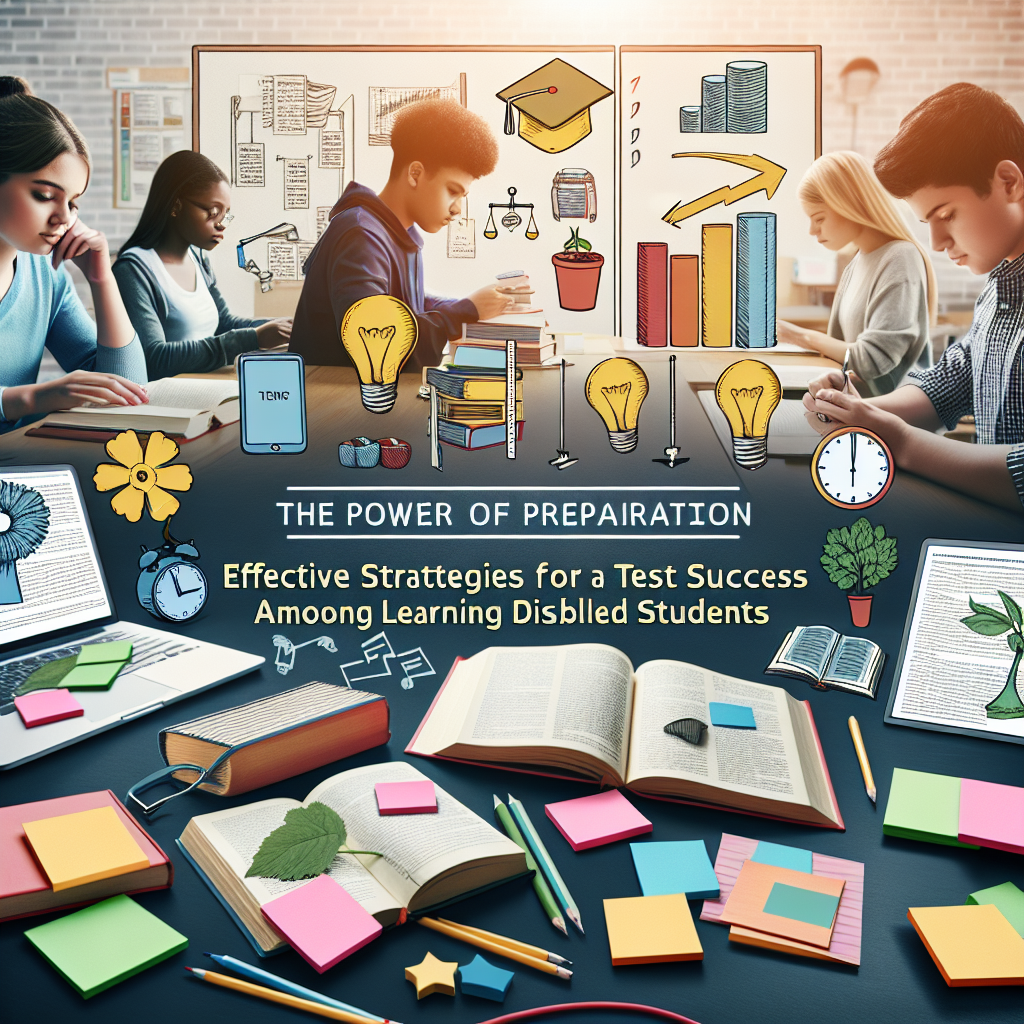
The Power of Preparation: Proven Strategies for Test Success Among Learning Disabled Students
Introduction
In a world where standardized tests often define academic success, students with learning disabilities can face unique challenges. However, the journey to overcoming these hurdles begins with one simple yet powerful concept: preparation. The power of preparation cannot be underestimated, especially when it comes to effective strategies for test success among learning disabled students. With the right tools and methods, these students can transform the test-taking experience from a source of anxiety into an opportunity for achievement.
This article delves deep into the art and science of preparation, offering a treasure trove of insights and strategies tailored for learning disabled students. We’ll explore the significance of individualized learning plans, time management techniques, and the use of technology, as well as provide real-world case studies illustrating effective applications of these strategies.
Understanding the Landscape
What are Learning Disabilities?
Learning disabilities are neurological disorders that affect the brain’s ability to receive, process, store, or respond to information. Common types of learning disabilities include dyslexia, attention deficit hyperactivity disorder (ADHD), and dyscalculia. Each of these can significantly impact a student’s performance on tests and exams.
The Importance of Preparation
Preparation is a multifaceted process that involves understanding the subject matter, developing skills, and building confidence. The power of preparation: effective strategies for test success among learning disabled students not only aids in academic performance but also cultivates a sense of achievement and self-efficacy.
The Strategies: Building a Foundation
Individualized Learning Plans (ILPs)
What is an ILP?
An Individualized Learning Plan is a customized roadmap designed to meet the specific needs of a student with learning disabilities. This plan should include accommodations, modifications, and specific learning goals.
Case Study: Sarah, a Student with Dyslexia
Sarah, a second grader diagnosed with dyslexia, struggled with reading assessments. Her teachers developed an ILP that included extra time for reading tasks, access to audio versions of texts, and the use of graphic organizers.
Outcome: With consistent application of her ILP, Sarah not only improved her reading skills but also gained confidence, leading to better performance in exams.
Relevance
This case underscores the crucial role of individualized plans in creating a supportive learning environment where students can thrive.
Time Management Techniques
Time management is essential for all students, but especially for those with learning disabilities who may need additional time to process information.
Strategies to Enhance Time Management:
Chunking Information: Breaking down study materials into smaller, manageable sections can help prevent students from feeling overwhelmed.
- Using Timers: Encouraging students to use timers can foster a sense of urgency and help them stay focused on tasks.
| Time Management Technique | Description | Example |
|---|---|---|
| Chunking | Breaking content into smaller parts | Study one chapter at a time |
| Timers | Setting a specific time for tasks | Study for 25 minutes, then take a break |
| Prioritizing Tasks | Arranging tasks based on urgency | Focus on subjects with approaching tests |
Incorporating Technology
Technology can be a game-changer for learning disabled students, providing tools that enhance learning and retention.
Useful Technologies:
- Text-to-Speech Software: Helps students with dyslexia by reading texts aloud.
- Organizational Apps: Tools like Trello or Google Keep can assist in managing study schedules and tasks.
Case Study: Mark, a Student with ADHD
Mark utilized a combination of organizational apps and timers to structure his study sessions. This approach reduced his procrastination, allowing him to prepare more effectively for tests.
Outcome: Mark reported not only better grades but also a reduction in test anxiety due to his newfound organizational skills.
Relevance
Mark’s success illustrates the transformative potential of technology and personalized strategies in fostering academic success.
Enhancing Test Taking Skills
Practice Tests and Simulations
Regular testing can reduce anxiety and improve performance by familiarizing students with test formats.
Effective Techniques:
Simulated Environments: Practice tests under timed conditions can mimic the actual test scenario.
- Reflective Reviews: After completing practice tests, reviewing mistakes can solidify learning.
Test-Taking Strategies
Students should be equipped with techniques to tackle different types of test questions, such as multiple-choice, essays, and short answers.
Tips for Test-Taking:
- Read questions carefully and underline key terms.
- Eliminate obviously wrong answers in multiple-choice questions.
- Use scratch paper for calculus or math-related problems.
Support Systems
The Role of Educators and Parents
Educators and parents play a pivotal role in supporting students with learning disabilities through preparation.
Effective Collaboration:
- Regular Communication: Teachers should maintain open lines of communication with parents about student progress.
- Workshops for Parents: Educating parents on strategies can equip them to support their children at home.
Case Study: The Wong Family
The Wongs implemented a structured study schedule at home mirroring what was taught at school. This collaboration led to significant improvements in their son’s academic performance.
Outcome: The collective effort from both school and home paved the way for a positive educational experience.
Inspiration Through Success
Real-World Applications of Preparation Strategies
The power of preparation can manifest in school-wide programs designed for students with learning disabilities. For example, many schools have adopted mentoring programs where older students help younger learners develop crucial study skills.
Case Study: The Peer Mentor Program
A middle school in California initiated a peer mentoring program where students with learning disabilities were paired with their peers. This collaborative effort not only improved the mentored students’ academic performance but also fostered a sense of community and camaraderie.
Outcome: The increased engagement through peer support led to higher test scores and a more inclusive school environment.
Conclusion
In conclusion, the power of preparation: effective strategies for test success among learning disabled students transcends mere academic skills; it fosters resilience, confidence, and a belief in one’s abilities. By understanding learning disabilities, utilizing individualized learning plans, employing time management strategies, and leveraging technology, students can redefine their test-taking experience into one filled with potential and possibilities.
Reading this article should inspire not only educators and parents but also students who may feel daunted by the challenges they face. The road to success is paved with preparation, and every step taken is a step toward empowerment.
FAQs
1. What are some common learning disabilities?
Common learning disabilities include dyslexia (difficulty reading), dyscalculia (difficulty with math), and ADHD (difficulty with attention and impulse control).
2. How can I create an Individualized Learning Plan for my child?
An ILP should be created collaboratively with educators, focusing on personal strengths, specific challenges, and tailored strategies to address those challenges.
3. What role does technology play in supporting students with learning disabilities?
Technology can provide tools that enhance learning, such as text-to-speech applications or organizational software that help students manage their time and study more effectively.
4. How can I help my child manage test anxiety?
Practicing relaxation techniques, preparing thoroughly, and familiarizing your child with the test environment can help alleviate anxiety.
5. Where can I find additional resources for students with learning disabilities?
Resources can be found through educational institutions, local support groups, and online platforms designed for educators and parents seeking to support students with learning disabilities.
The power of preparation is profound, and effectively understanding and implementing these strategies can open doors for learning disabled students, enabling them to achieve test success and beyond. Let’s empower our students together!

